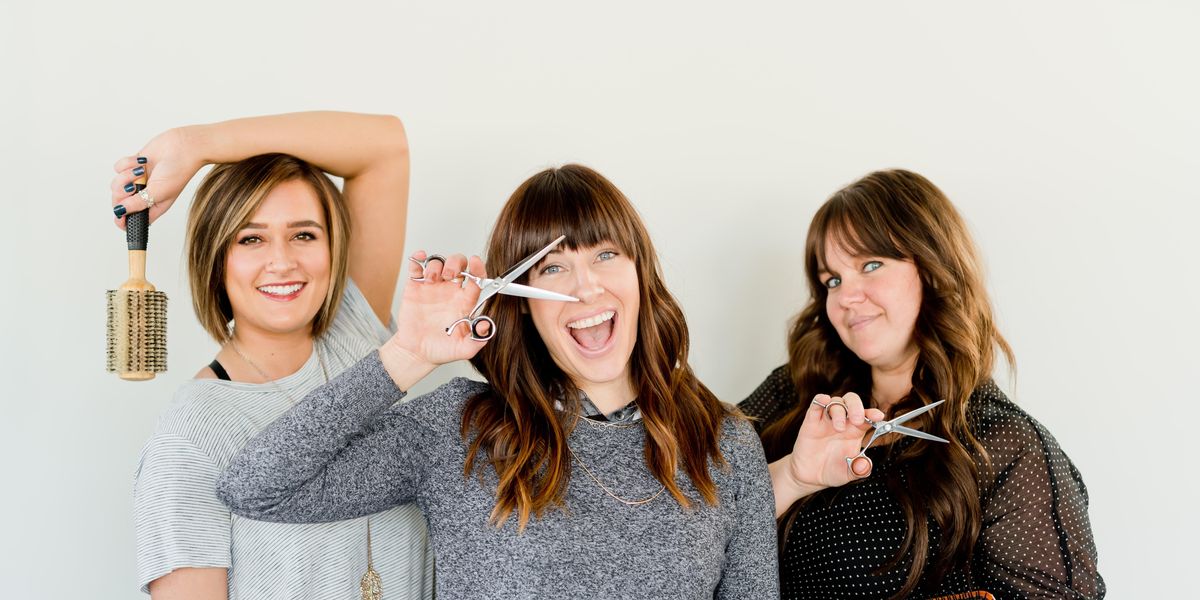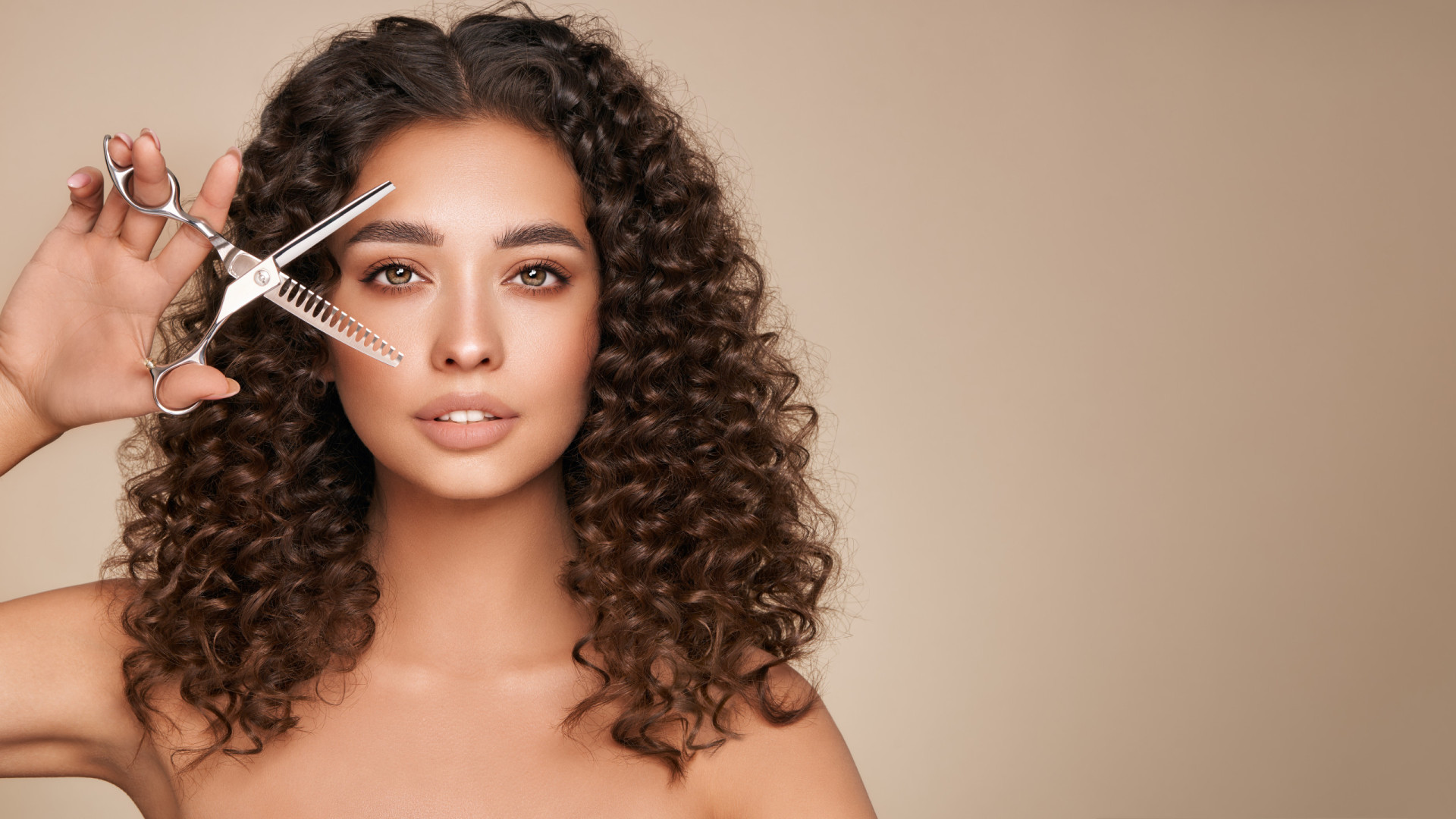
How to Cut Your Own Hair
How to Cut Your Own Hair at Home Like a Pro
We’ve all been there – your hair is desperate for a trim, but squeezing in (and paying for) a salon appointment is just not happening right now. The thought of cutting it yourself sounds terrifying though. What if you mess it up? How to cut your own hair?Cutting your own hair doesn’t have to be risky! With the right tools, techniques, and mindset, you can absolutely pull off a salon-worthy haircut from the comfort of home. Let’s walk through it!
Gather Your Supplies
Having the proper hair-cutting supplies on hand is crucial for getting great results. At the very minimum, you’ll need:
Sharp Haircutting Scissors
Never, ever use dull scissors from your junk drawer. Invest in a quality pair of sharpened shears specifically designed for cutting hair. They’ll run you $10-$25 but are worth it.
Haircutting Cape or Towel
A salon cape or large towel helps contain the hair mess and keep you tidy as you cut. Drape it over your shoulders.
Hand Mirrors
Two mirrors – one hand-held and one wall-mounted – allow you to see the front, back, and sides as you work.
Haircutting Clips or Binders
Sectioning clips or binders help divide and isolate hair as you cut each layer. Grab several.
Water Spray Bottle
Slightly dampen hair before cutting by misting with a spray bottle filled with water and a few drops of leave-in conditioner. Dry hair is unruly!
Brush and Comb
Have both vented and non-vented brushes on hand, plus a fine-tooth comb to help section and detangle.
Hair Cutting Techniques 101
Now that you’re prepped, let’s go over some basic techniques to approach cutting your hair like a stylist:
Work In Dry, Clean Hair
Always start with un-styled, dry hair that’s free of product buildup. Shampoo and let it air dry fully before cutting.
Cut Conservatively
Go slowly and take less than you think at first, especially on the top and overall length. You can always take more later!
Section Hair Precisely
Use your comb and sectioning clips to meticulously isolate and separate hair into manageable sections before cutting each one.
Follow Your Head Shape
Visualize your head shape as you cut, holding sections parallel to create flattering, face-framing layers. Overdirection can happen easily.
Use Sharp Scissors
Clean, sharp scissors create precise lines and minimize damage compared to dull blades crushing ends. Invest in decent shears.
Cut With Tension
Snag hair between your fingers and hold it taut at a 90 degree angle before making each snip. This provides control.
Check From Multiple Angles
Use your mirrors strategically and rotate your head frequently to inspect from all sides as you cut layer by layer.
Point Cutting Techniques
Use the tips of your scissors to lightly chip into and soften any thick lines on the exterior. Do this horizontally across the ends.
Now let’s move on to some specific cutting techniques for popular styles!
Cutting Your Own Layers
Adding layers creates movement, volume, and dimension to blah, one-length haircuts. Use this technique for long or medium styles:
Part and Clip Hair
Make a clean center or slightly off-center part depending on your part line. Clip away the top portion of hair for now.
Undercut Lower Layers
Unclip the bottom portion and cut upwards into it using vertical or horizontal sections while following your head shape. Keep circling and cutting higher up. This undercuts layers underneath.
Unclip Top and Over Direct
Release the top hair so it falls over the underlayers you just cut. Over direct the top length by cutting on a slight inward bevel or angle to blend with the layers below.
Clean Up and Texturize
Connect any weight lines between layers using your point cutting technique. Lightly chip into thick ends to texturize and soften lines.
Cutting Your Own Bangs
Cutting bangs is scary, but totally doable! Always start longer until you get comfortable trimming them shorter:
Section Front Hair
Make a clean part from the front corners of each side part back past your ears/temples. Clip away the back sections.
Comb Bangs Forwards
Comb all your front bang area hair straight down over your face, creating a perfectly straight curtain at your desired length.
Cut Across Guide
Take your scissors and cut across the bulk in a straight, slightly overcurved line at your guide length, keeping the scissors parallel.
Refine Face Shape
Let the bangs down and refine any longer pieces with face-framing shapes using point cutting. Should follow your brow shape.
Piece Out Wispy Pieces
Point cut upwards and outwards to create wispy pieces that blend into your shorter bangs. This delivers soft dimension.
Cutting Short Styles
Pixies, bobs, and other short, cropped cuts are the trickiest since there’s no length to hide mistakes. Use these tips:
Dampen Hair Thoroughly
Short hair cuts most evenly and accurately when very damp or nearly soaking wet. Water resets the curl pattern.
Bring Neckline Up First
Starting at the nape, make clean snips upward following your neckline curve. This sets the baseline length for the back.
Section and Trim Perimeter
Work next around the whole perimeter, corner-to-corner, clipping and trimming clean sections horizontally to desired length. Make clean guide lines.
Refine Interior
With clean boundaries set, go back and refine the interior sections by twisting up and snipping into vertical sections. Recheck hairline and neckline frequently!
Blend and Point Cut
Take your time and keep blending between sections using point cutting. Dampen and cut slowly for precision.
Tips for a Flawless DIY Haircut
Cutting your own hair successfully requires the right approach. Keep these tips in mind:
Start With Clean, Fresh Hair
Don’t try cutting dirty or styled hair – it’s nearly impossible to cut accurately. Wash and thoroughly blow dry first.
Consider Your Hair Type
Curly and wavy hair often requires extra dry cutting and precise sectioning to avoid bizarre bulky spots. Go slowly and refine shape.
Watch Tutorials First
Before making your first snip, watch tutorials on cutting your specific desired style and length. Seeing the proper technique demonstrated helps immensely.
Elevate Hair At Crown
When in doubt, cut with some slight upwards elevation at the crown area rather than straight across. This avoids a boxy, heavy finish.
Ask For Help
If you have a helpful friend or family member around, definitely enlist their eyes and hands! Having someone verify sections are even makes a huge difference.
With some time, patience, and practice, you can absolutely learn to trim and shape your hair at home for salon-fresh results. Don’t be intimidated – grab those shears and get snipping!





